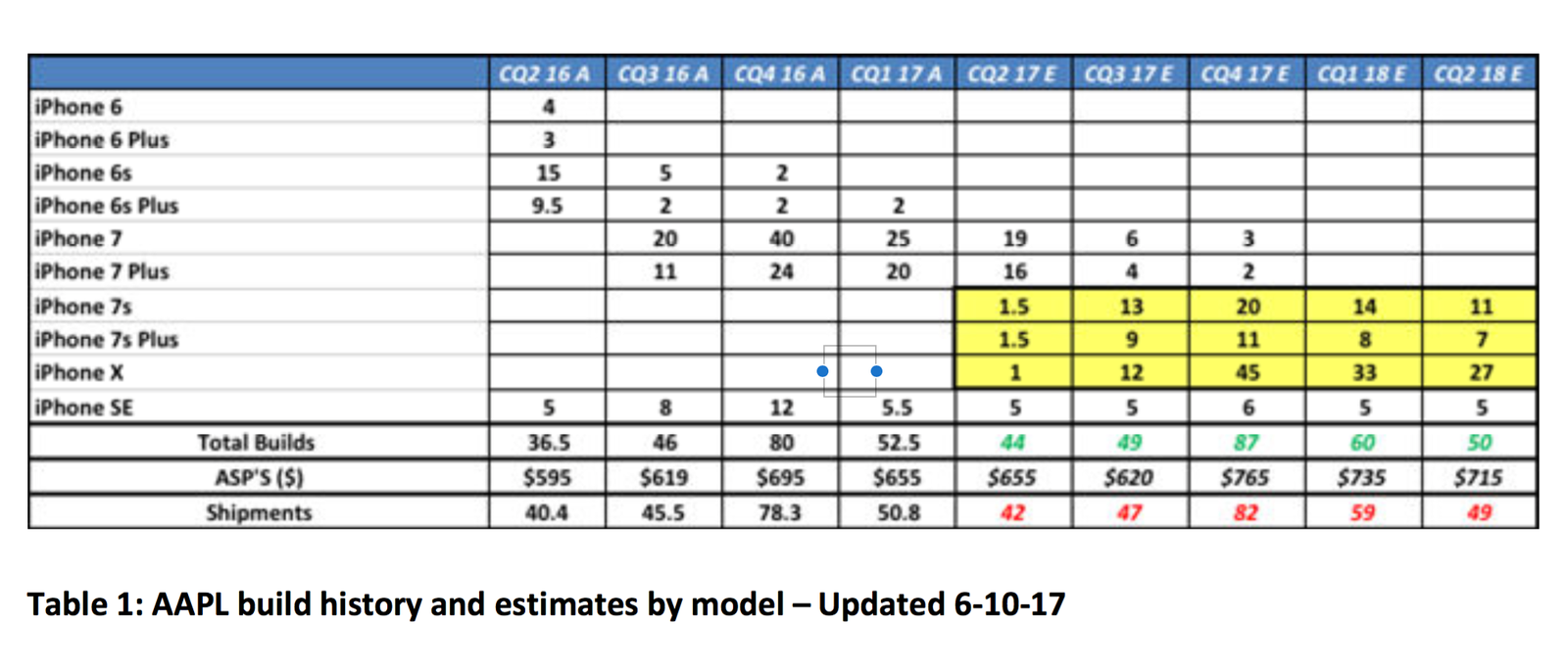Waiting for iPhone 8? It seems that your wait just got a bit longer. A new report published by Barron’s on the basis of BlueFin’s research suggests that though there’s no delay in the ordering of components for iPhone X (that’s what it’s called in factories), the manufacturing time frame is slightly slipping from what was expected earlier. Therefore, our chances of getting an iPhone 8 right after launch just got slimmer. The report says:
“Our ongoing reads reinforce our earlier view that AAPL will offer only minimal units of the iPhone X at launch with improved availability in October. A total of 13M iPhone X builds through September, a reduction of 5M from our original forecast in March.”
However, post this September-October period it’s expected that Apple will quickly ramp up iPhone 8 production and the 10th annivesary iPhone will come to account for half of all iPhone units manufactured. The BlueFin analysts John Donovan and Steve Mullane provide following growth projections in their report:
“iPhone X builds ramp in CQ4’17, projecting to represent 55% of the mix, and this ratio remains fairly steady through mid-2018. We continue to track increases in 2018 and 2019 build projections by tens of millions of units each year and while forward projections are dubious, the possibility of sustained growth is welcome news indeed. The rationale behind this is that the step up to the new OLED design will filter across all offerings in future generation phones and with an installed base hurtling towards 750M in the coming year. Additionally, as many as 300M of those phones by mid-2018 will be over 2 years old and should provide fertile ground for continued growth.”
The analysts also offer a table to support their reasoning:

A major contributing factor behind this growth may be adoption of OLED display technology. As time will pass more and more people will want to upgrade their iPhone in 2018 and 2019 because of this better display technology, which will contribute to steady sales growth for Apple. And as a result of this growth, we may eventually also see a mid-year refresh of iPhone line up to bring OLED technology to some other iPhone models as well. Right now it seems that Apple and its suppliers are busy in collecting as many OLED display parts as possible to satisfy this upcoming insatiable demand, which may be a reason behind the slower-than-expected manufacturing schedule.
While authority of sources used to prepare this report can be questioned and projections should always be taken with a pinch of salt, one thing that can’t be questioned is the precision with which this data has been provided by the analysts. Based on this level of precision we can expect that analysts must have chosen some reliable sources to prepare this report. Plus, BlueFin also has a good history of analyzing Apple’s product launches properly.